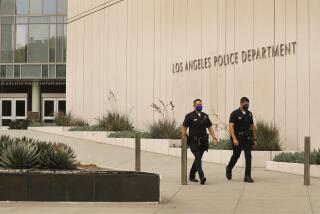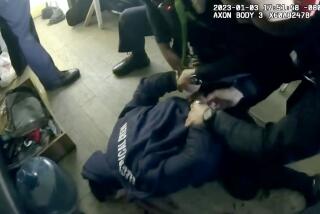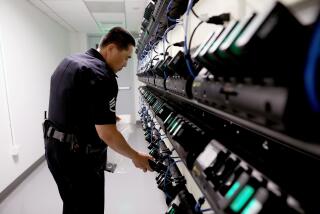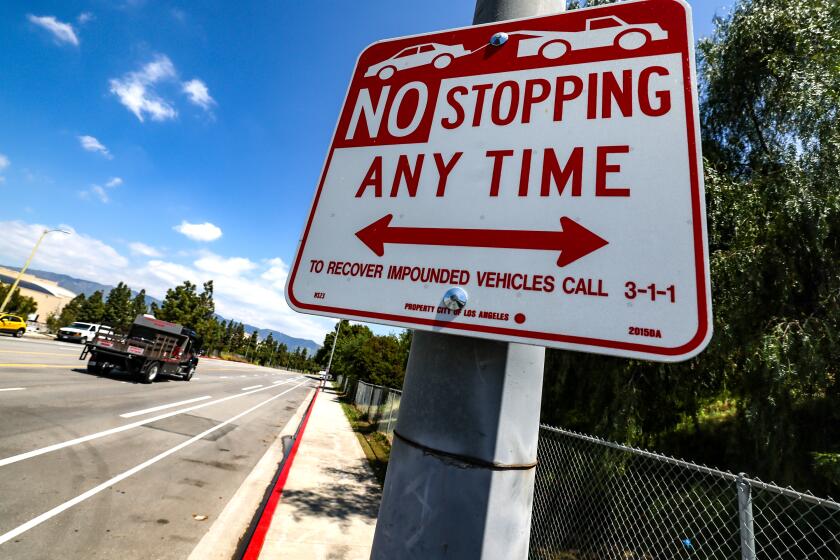Police Commission to review LAPD’s facial recognition use after Times report
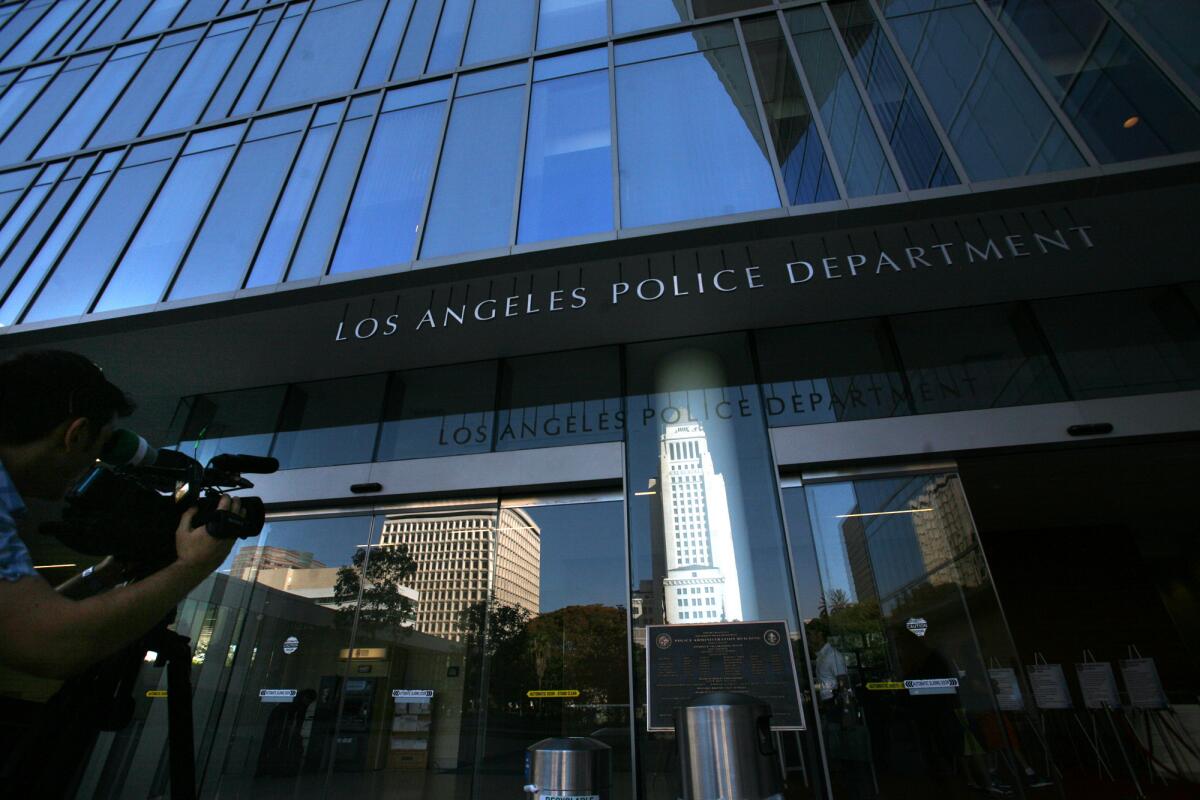
The Los Angeles Police Commission on Tuesday said it would review the city Police Department’s use of facial recognition software and how it compared with programs in other major cities.
The commission did so after citing reporting by The Times this week that publicly revealed the scope of the LAPD’s use of facial recognition for the first time — including that hundreds of LAPD officers have used it nearly 30,000 times since 2009. Critics say police denials of its use are part of a long pattern of deception and that transparency is essential, given potential privacy and civil rights infringements.
Commission President Eileen Decker said a subcommittee of the commission would “do a deeper dive” into the technology’s use and “work with the department in terms of analyzing the oversight mechanisms” for the system.
“It’s a good time to take a global look at this issue,” Decker said.
Decker and Commissioner Dale Bonner sit on the commission’s data subcommittee, which will take up the task.
Decker also asked LAPD Chief Michel Moore to work with city attorneys to conduct a review of past responses to requests for public records related to facial recognition, “just to be assured that the department addressed each of those requests appropriately.”
In addition to reporting the scope of LAPD’s use of facial recognition, The Times’ article noted that the widespread use stood in contrast to repeated denials by the LAPD that it used facial recognition technology or had records pertaining to it, including in response to public records requests.
Decker’s comments followed a briefing by Moore, who cited The Times’ article and said he wanted to provide the commissioners with information about the program.
The LAPD does not have its own facial recognition platform, but more than 300 LAPD officers have access to the Los Angeles County Regional Identification System — which allows officers from across the region to input images from surveillance cameras and other sources for comparison against a database of nearly 9 million mug shots.
“This is a database that allows us to take that image and get clues or tips as to persons that may be a match,” Moore said.
Moore said the system had helped produce leads in homicide, sexual assault and robbery investigations.
He said “the algorithm that does this is not based on race or sex, it’s based on the contours of a person’s face,” and that the leads the system produces are just one piece of information that investigators use to more deeply investigate crimes.
“This is a process that I have faith and confidence in,” Moore said. “It’s also one that has controls and limitations.”
Moore said the LAPD’s use of the system was “not done in secret.”
Such technology has drawn criticism from civil liberties advocates and others, including due to findings that it can produce more false results for people of color. Some critics also object to the use of mug-shot databases as the source of comparison photographs, and say the lack of government transparency around the use of facial recognition is increasingly problematic as the technology becomes more powerful.
The city of San Francisco last year banned the use of facial recognition, including by its police, citing civil liberties concerns.
Additional criticism has been directed at the LAPD for consistently claiming it does not have any records related to the technology. The county system the LAPD has access to is maintained by the Los Angeles County Sheriff’s Department, and civil liberties advocates say the LAPD has hidden behind that fact to act as if it has no paper trail of records related to its own use of the system.
The Times found multiple examples of the LAPD denying having records on facial recognition, including policies around its use, as well as records in which LAPD officials have issued directives and policy positions on the use of facial recognition within the department.
In the summer of 2019, a Times reporter asked the LAPD about its use of facial recognition directly.
“I’ve found some material on LAPD’s pilot facial recognition programs from 2004/5, but wanted to get in touch to see if the department has an official statement and stance on the technology today. It would be great to know if it’s being used by the department, and the thinking behind the department’s approach,” a Times reporter wrote.
Josh Rubenstein, an LAPD spokesman, responded by writing, “We actually do not use facial recognition in the Department.”
The only thing he added was that the department’s partner agencies had used it in “a few limited instances” during joint investigations.
On Tuesday, Commissioner Steve Soboroff asked Moore about the exchange.
“Was there a misstatement, or was there a misinterpretation or a miscommunication?” Soboroff asked.
“There was a misunderstanding,” Moore said, adding that LAPD officials believed the Times reporter was asking about a pending bill in Sacramento that would limit the use of facial recognition with police body cameras, which Moore said the LAPD did not do. Rubenstein had previously provided the same explanation.
“It was not meant to hide or shield or obscure our involvement,” Moore said.
Bonner, part of the subcommittee that will now look into the software and its use in the department, asked which LAPD commanders had oversight of the system’s use, and said the commission would no doubt have more questions moving forward.
He also said, “Sometimes if you don’t ask the right question, you don’t get the right answer” — seeming to suggest the LAPD’s erroneous denials had to do with the framing of the requests for information.
In addition to the LAPD’s denial of facial recognition use to The Times, the LAPD denied a November public records request seeking “records and materials related to the solicitation, acquisition, and use of face recognition technology and related software and services” by saying, “The LAPD does not utilize facial recognition technology and related software services.”
After The Times questioned the accuracy of that response, the department sent a correction — calling its previous statement “inaccurate.”
Several callers who spoke during a public comment portion of the Police Commission meeting rejected the notion that the LAPD had simply misunderstood past requests for information, saying the requests — including from The Times and the activist organization Stop LAPD Spying Coalition — have been explicit.
“Chief Moore tries to say they didn’t understand the question. They lied,” said Paula Minor, a local Black Lives Matter activist.
Other callers said they supported the LAPD and its use of facial recognition, citing rising violent-crime levels. Although violent crime overall is down compared with this time last year, shootings and homicides have increased.
Decker did not provide a timeline for when the subcommittee’s review of facial recognition use by the LAPD would be completed.
The Los Angeles County Sheriff’s Department has declined to answer questions about broader use of its facial recognition platform by dozens of other police agencies in the county.
More to Read
Start your day right
Sign up for Essential California for news, features and recommendations from the L.A. Times and beyond in your inbox six days a week.
You may occasionally receive promotional content from the Los Angeles Times.
